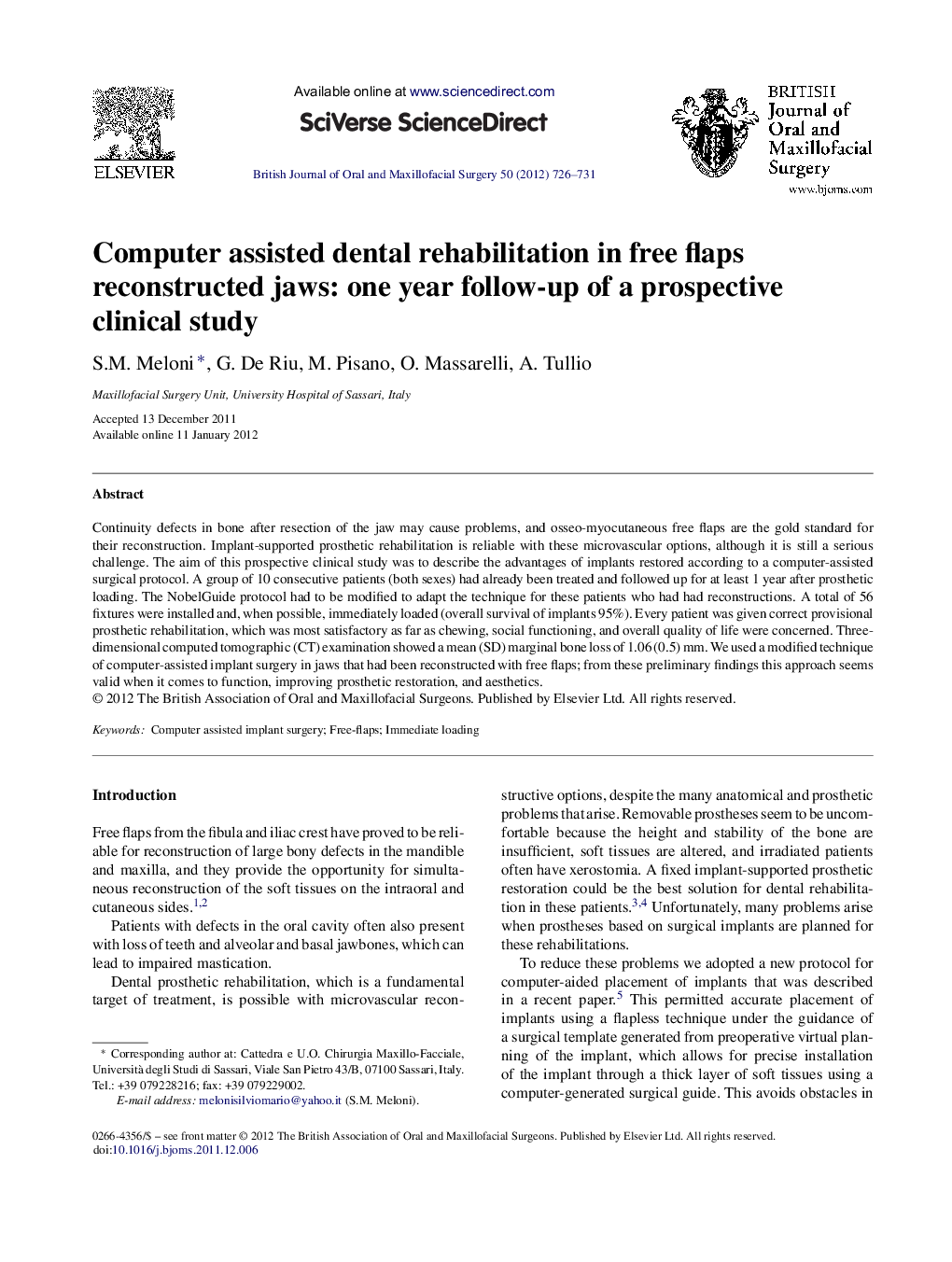| کد مقاله | کد نشریه | سال انتشار | مقاله انگلیسی | نسخه تمام متن |
|---|---|---|---|---|
| 3123864 | 1583735 | 2012 | 6 صفحه PDF | دانلود رایگان |

Continuity defects in bone after resection of the jaw may cause problems, and osseo-myocutaneous free flaps are the gold standard for their reconstruction. Implant-supported prosthetic rehabilitation is reliable with these microvascular options, although it is still a serious challenge. The aim of this prospective clinical study was to describe the advantages of implants restored according to a computer-assisted surgical protocol. A group of 10 consecutive patients (both sexes) had already been treated and followed up for at least 1 year after prosthetic loading. The NobelGuide protocol had to be modified to adapt the technique for these patients who had had reconstructions. A total of 56 fixtures were installed and, when possible, immediately loaded (overall survival of implants 95%). Every patient was given correct provisional prosthetic rehabilitation, which was most satisfactory as far as chewing, social functioning, and overall quality of life were concerned. Three-dimensional computed tomographic (CT) examination showed a mean (SD) marginal bone loss of 1.06 (0.5) mm. We used a modified technique of computer-assisted implant surgery in jaws that had been reconstructed with free flaps; from these preliminary findings this approach seems valid when it comes to function, improving prosthetic restoration, and aesthetics.
Journal: British Journal of Oral and Maxillofacial Surgery - Volume 50, Issue 8, December 2012, Pages 726–731